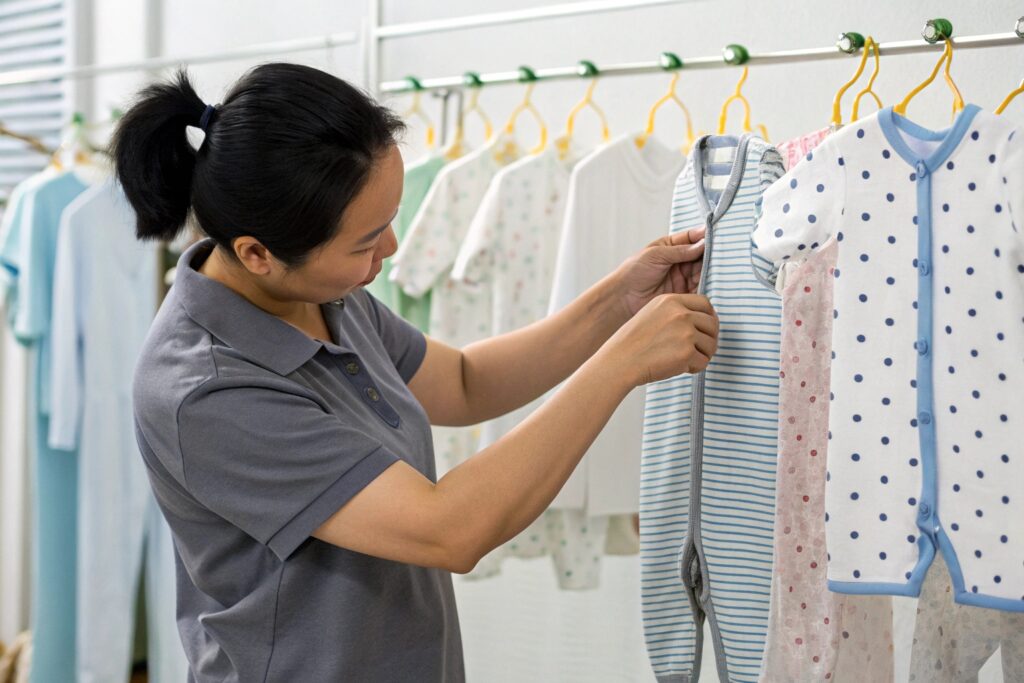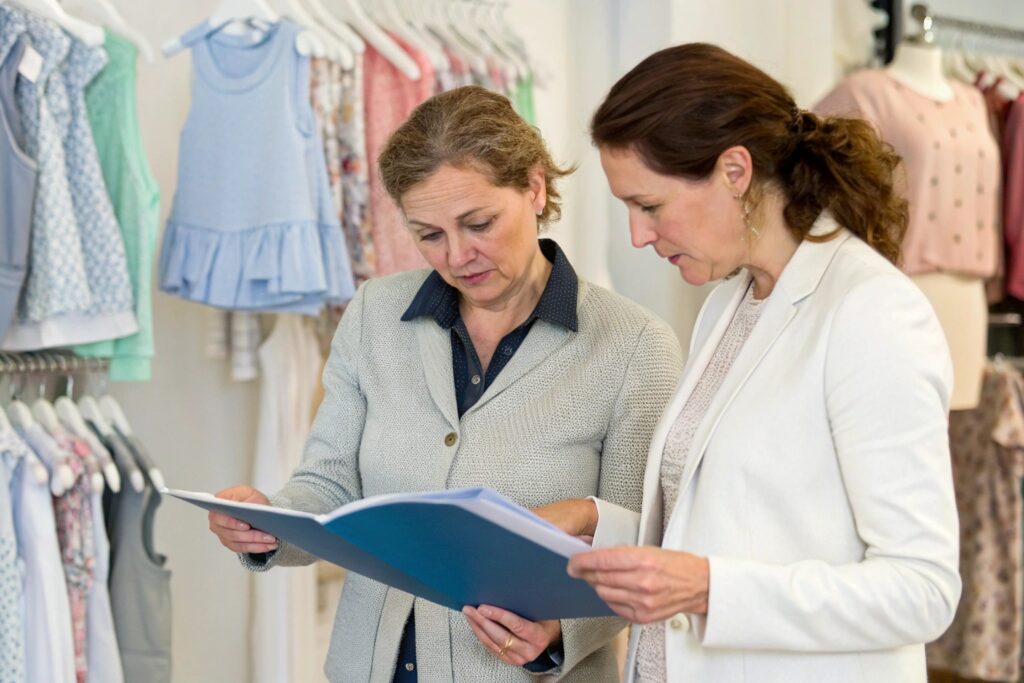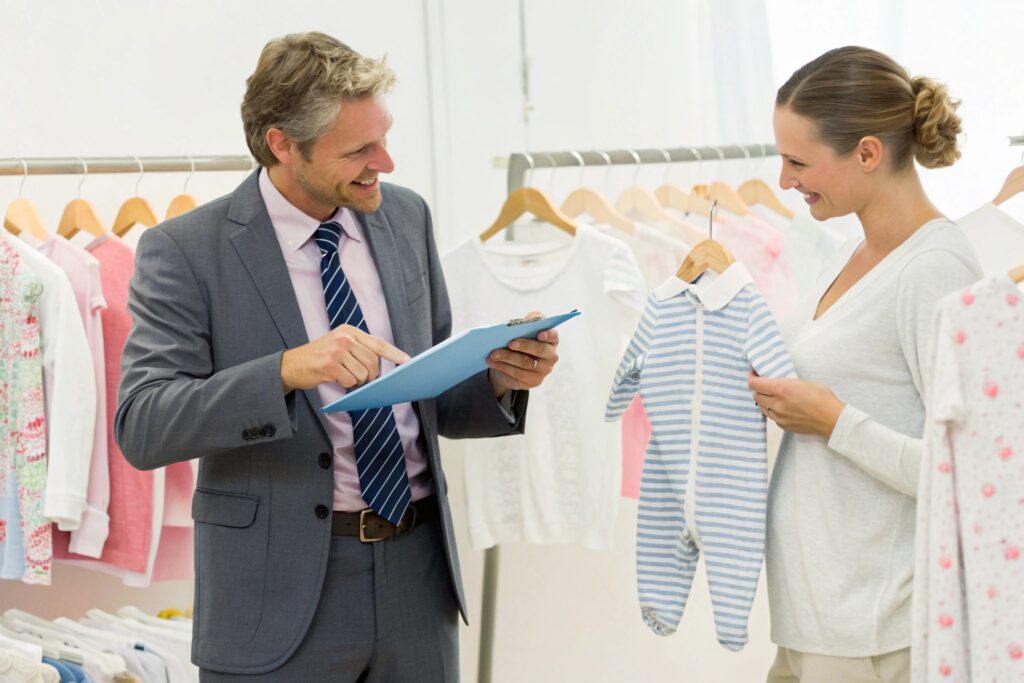Starting a children's clothing manufacturing business takes more than sewing machines—it takes planning, sourcing, and a deep understanding of the market.
To start a kidswear manufacturing business, you need the right equipment, licenses, skilled workers, reliable fabric sources, and a strong network of wholesale clients.
In this guide, I’ll walk you through the essential steps to build a profitable children's clothing factory—from your first machine to your first buyer.
What Equipment and Licenses You Need to Start?
Before you make your first garment, you need a proper setup. This includes legal documents, basic utilities, and the right machines for small garments.
Starting a kidswear manufacturing business requires sewing machines, cutting tables, pressing tools, business registration, safety compliance, and factory permits.

What equipment is essential for kidswear production?
| Equipment | Purpose |
|---|---|
| Straight stitch machine | Core sewing for all garments |
| Overlock (serger) | Seals seams on knitwear |
| Flatlock machine | Smooth finishing for soft babywear |
| Snap/eyelet machine | Fasteners for rompers, shirts, bibs |
| Steam iron and table | Final finishing and folding |
| Cutting table + fabric scissors | Hand or manual layer cutting |
| Thread trimmer or fusing press | Clean finishing |
For a small setup (2–5 operators), a 500–1000 sq ft workspace can be enough to start.
What licenses and permits are required?
Depending on your location, you’ll need:
- Business license or registration (LLC, sole prop, etc.)
- Import/export license (if sourcing overseas or exporting)
- Factory permit (local zoning and safety inspection)
- Worker registration (labor law compliance)
- Fire and safety certification
- Trademark registration (optional but recommended)
You should also maintain CPSIA compliance if selling to U.S. buyers, and OEKO-TEX®/GOTS certifications if you want to enter the organic babywear market.
How to Set Up a Production Line for Kidswear?
Kidswear is smaller, softer, and more delicate than adult clothing—so your production line must be tailored accordingly.
A kidswear production line needs skilled sewers, fabric-friendly machines, quality control checkpoints, and ergonomic layout to handle small-scale garments efficiently.

How should a typical kidswear line be structured?
| Workstation | Task |
|---|---|
| 1. Cutting station | Manual or semi-automated fabric cutting |
| 2. Stitching/Assembly | Sewing bodice, sleeves, panels |
| 3. Overlock & hemming | Finishing seams and leg openings |
| 4. Snap/zipper fixing | Adding baby-safe closures |
| 5. QC & measurement | Checking size, seams, strength |
| 6. Pressing & folding | Steaming, folding, and packaging |
You can start with 5–10 machines in a U-shaped or linear layout, depending on space. Each operator should specialize in one or two tasks to speed up training and efficiency.
What makes kidswear production different from adultwear?
- Smaller patterns = higher stitch accuracy
- Delicate fabrics like muslin or jersey
- Softer threads and elastic requirements
- Strict testing for snaps, prints, and seams
- Size-sensitive patterns (NB–24M, 2T–6T)
Every detail matters—because your clients are making clothes for the most sensitive customers.
Where to Source Fabrics and Skilled Labor?
Your materials and workers will define your final quality—so it’s critical to find reliable sources before you scale.
To succeed in kidswear manufacturing, source soft, certified fabrics and build a team of skilled tailors trained in babywear safety and stitching.

Where can you buy quality babywear fabric?
| Fabric Type | Good for... | Where to Source |
|---|---|---|
| Organic cotton | Premium babywear, sleepwear | India, Turkey, Vietnam, China |
| Bamboo viscose | Breathable, silky-feel garments | China, Indonesia |
| Muslin | Swaddles, summer dresses | South India, Bangladesh |
| Cotton rib knit | Onesies, rompers, undershirts | Local mills or OEKO-TEX® suppliers |
| Poly-cotton blends | Playwear, leggings | Available locally or via traders |
Always check certifications like OEKO-TEX® Standard 100, GOTS, or CPSIA-compliant labeling to avoid safety issues for infants and toddlers.
How do you find and train labor?
- Start with experienced tailors from babywear or lingerie factories
- Train on safety stitching (e.g., snap strength, seam coverage)
- Use dummy patterns to test seam accuracy before production
- Provide clear tech packs and visual work instructions at each station
At Fumao, our operators are trained in soft seam techniques to avoid scratchy threads or harsh elastic for babies. Consistency is key.
Tips for Finding Your First Wholesale Clients?
Once your machines are running, it’s time to find buyers who need your expertise. B2B outreach is your next big milestone.
To attract wholesale clients, focus on building a strong sample set, an online presence, and smart outreach to kidswear brands, retailers, and importers.

Where can you find your first buyers?
| Channel | How to Use It |
|---|---|
| LinkedIn & B2B Platforms | Connect with kidswear brand managers |
| Trade shows (e.g., MAGIC, CBME) | Show samples and collect leads |
| Freelancer networks | Offer sampling services on sites like Upwork |
| Google Search & Ads | Run ads targeting “babywear manufacturers” |
| Sourcing groups (Facebook/WhatsApp) | Join communities of importers |
Most buyers want to see:
- A professional catalog or PDF portfolio
- MOQ structure and sample process
- Real photos of your production line
- List of available fabrics and certifications
What helps you stand out from other factories?
- Low MOQ support for new brands
- Compliance with safety standards (CPSIA, OEKO-TEX®)
- Custom print or embroidery services
- Clear communication in English
- Transparent lead times and pricing tiers
You don’t need to be the cheapest—you need to be the most reliable.
Conclusion
Starting a children’s clothing manufacturing business takes the right tools, materials, people, and clients. With a clear setup, strong product quality, and focused outreach, you can build a factory that babywear brands trust—and keep coming back to.










